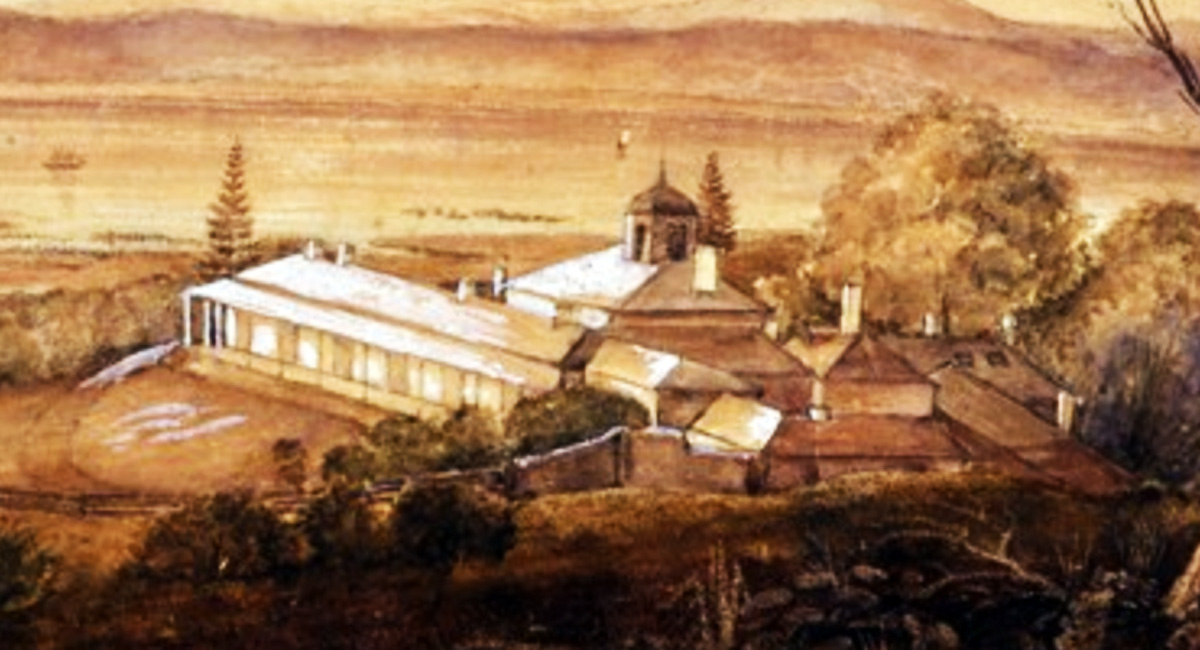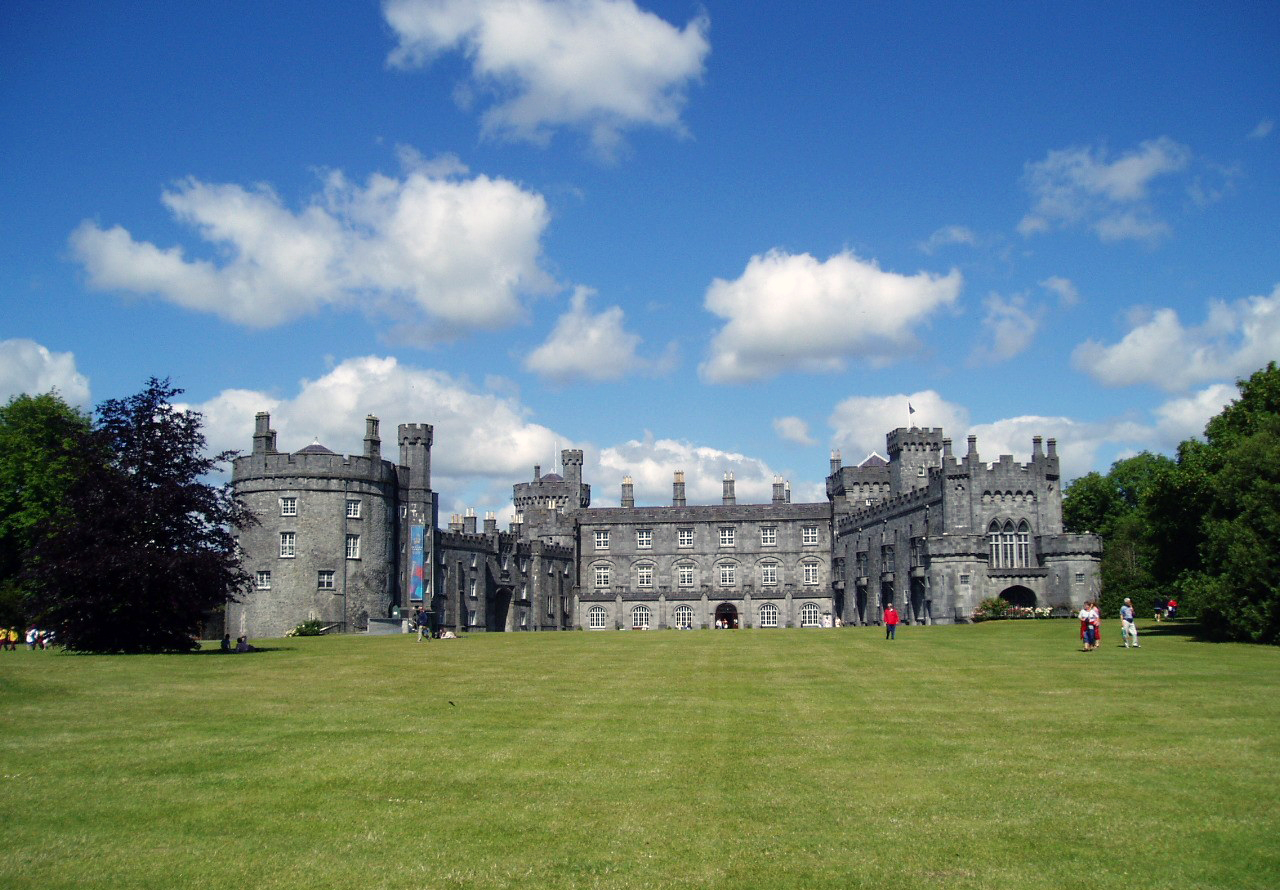An Aristocratic ‘Air Castle’: the Butlers and the lost baby
A select few families in Ireland wielded a huge amount of power and it is understandable that others dreamt of being part of their network. One of the most eminent families in Ireland was the Butlers. They prospered in their role as English overlords and built an impressive number of castles that are tourist attractions today. Photo: Kilkenny Castle (one of the Butler residences).
Some past Murray-Priors saw the Butlers as an important focus when compiling family trees, starting with England’s Edward I (reigned 1272-1307)1) through to Eleanor (Alianore) de Bohun (c.1302-63). Note that Edward I had 17 or 18 (legitimate) children so his descendants are numerous! Alianore married James Butler, 1st Earl of Ormond, 2nd Earl of Carrick and Lord Palatine2) of Tipperary, Ireland. By jumping from sons and daughters as required, you can get from Eleanor/Alianore to Frances Butler, elder daughter of the Hon. Colonel Piers Butler, who married Hervey Morres: their great-granddaughter married Andrew Murray-Prior. Not a close connection!
Another Butler ‘air castle’, with some half-truths, helps account for a story involving an illegitimate Butler baby. At a time when no-one could conclusively prove their parentage, when abstinence was the only effective contraception, and it was common for wealthy men to have illegitimate children, it was easy to believe that parentage was not always what it seemed.3) Usually these beliefs coalesced around a powerful, and hitherto unacknowledged, father. One example is Sir John Conway, an equerry to (later Queen) Victoria’s father and dominating influence during Victoria's childhood. Victoria banished him from the court when she ascended the throne. One explanation for Conroy's bullying of Victoria is that he believed (against all evidence) that his wife was Victoria's half-sister, an illegitimate child of her father. The eminent historian A.N. Wilson comments that it is unknown if Sir John’s wife shared – or even knew about – her husband’s belief in her royal parentage.4)
The Murray-Prior/Butler 'lost child' story begins with the above Andrew M-P's son, Andrew Redmond Murray-Prior (1786-1860), having an affair with his distant cousin Lady Sarah Butler (c.1790-1838). This is possible: they were both in their early twenties and unmarried at the time. Robert M-P recorded5) that Lady Sarah became pregnant, but was forbidden to marry Andrew because her parents disliked him (as likely, as a younger son, he was not much of a catch for a Butler lady). When Lady Sarah's baby was born in April 18116), her parents had the baby whisked away to be raised by foster parents. Despite efforts, neither parent was ever able to discover their baby’s given name or whereabouts. Lady Sarah was ‘distraught for some years’, though in October 1812 she married another relative, the Hon. Charles Harward Butler-Clarke. It is feasible that this marriage was a strategic one to contain the scandal within the family. Such an action would be especially likely if the birth had been a difficult one, making it obvious to a bridegroom that Lady Sarah, far from being a virgin, had already given birth. Aristocratic women tended to be free to have affairs with suitable men, with resulting illegitimate children, but there was considerable anxiety that they first produce a legitimate ‘heir and a spare’.7) Certainly the Hon. Charles was amendable to a bargain and so eager for advancement that, to try to secure an inheritance, he later added a relative’s surname to his, becoming the Hon. Charles Harward Butler-Clarke-Southwell-Wandesforde: yes, really!
Robert M-P related how the baby, the granddaughter of an Earl and daughter of one of the wealthiest families in Ireland, was named Elizabeth and given the surname of Marks. She reputedly came to NSW in 1836 to work for the Innes family at Lake Macquarie. On 4 July 1836, she married a fellow employee, Alexander Cameron: this marriage in the Church of England at Port Macquarie is listed in the BDM. Alexander Cameron later enlisted TLM-P’s help in getting Elizabeth’s parentage recognised, but all the younger generation of Butlers did was to indicate their regret and acknowledge the birth.
 Painting of the Innes estate at Lake Macqaurie, 1839.
Painting of the Innes estate at Lake Macqaurie, 1839.
It's an intriguing tale, yet one that raises a number of red flags.
While it was normal for Victorian-era husbands to write on behalf of wives, there is no mention of Elizabeth (like Sir John Conroy’s wife) having any knowledge of her husband’s intervention. In this case, a complication is that Elizabeth Marks was not literate, as indicated by her signing her marriage certificate with a cross. As well, the dates Robert M-P gave for Elizabeth and Alexander’s deaths are incorrect (cf. BDM) so he is not always reliable. His version, with some added errors such as Sarah and Andrew marrying, is repeated on Ancestory.com.8)
The verdict? Most likely, Elizabeth Marks had nothing to do with the Murray-Priors or Butlers, though possibly an affair that resulted in a baby did occur.
